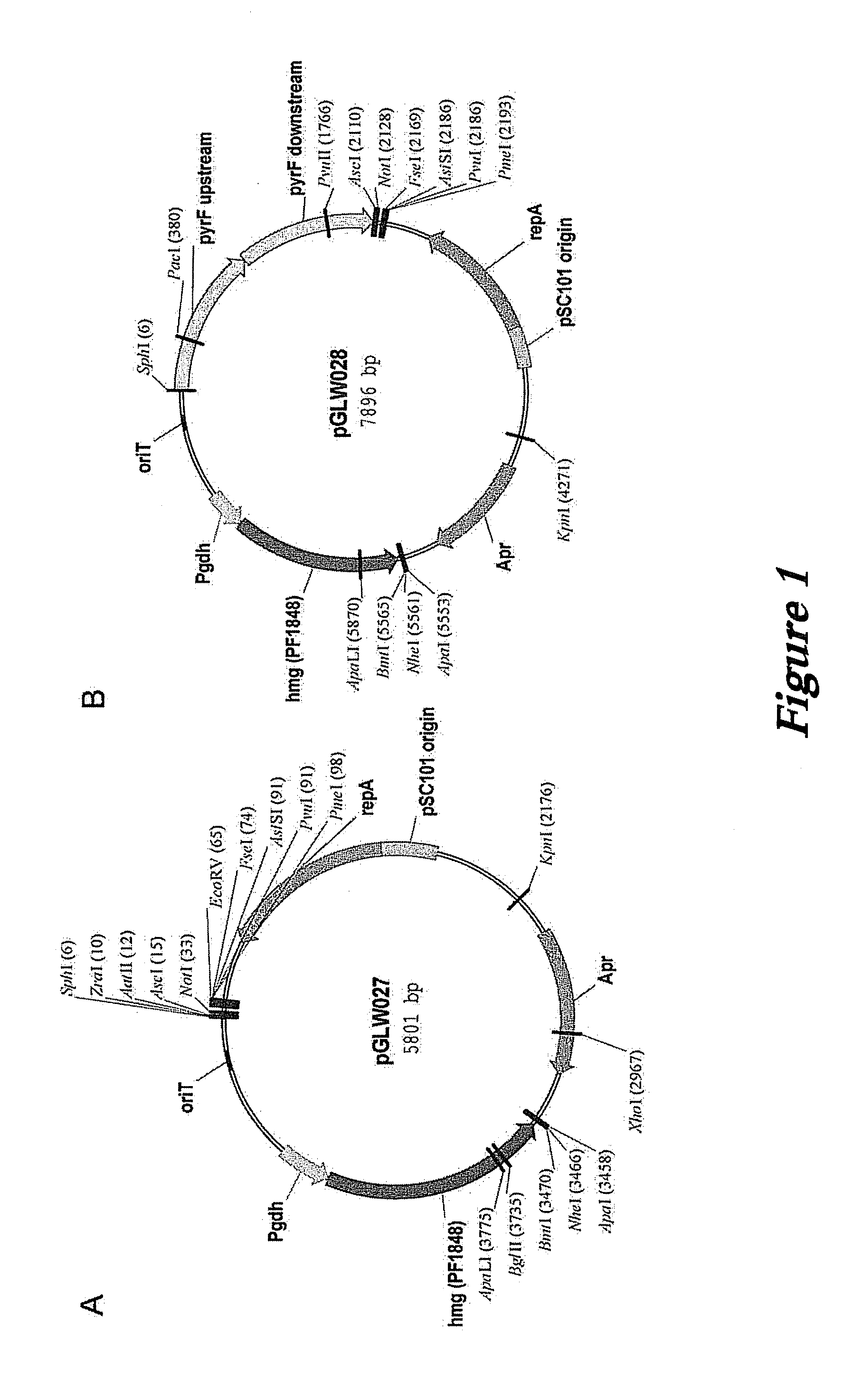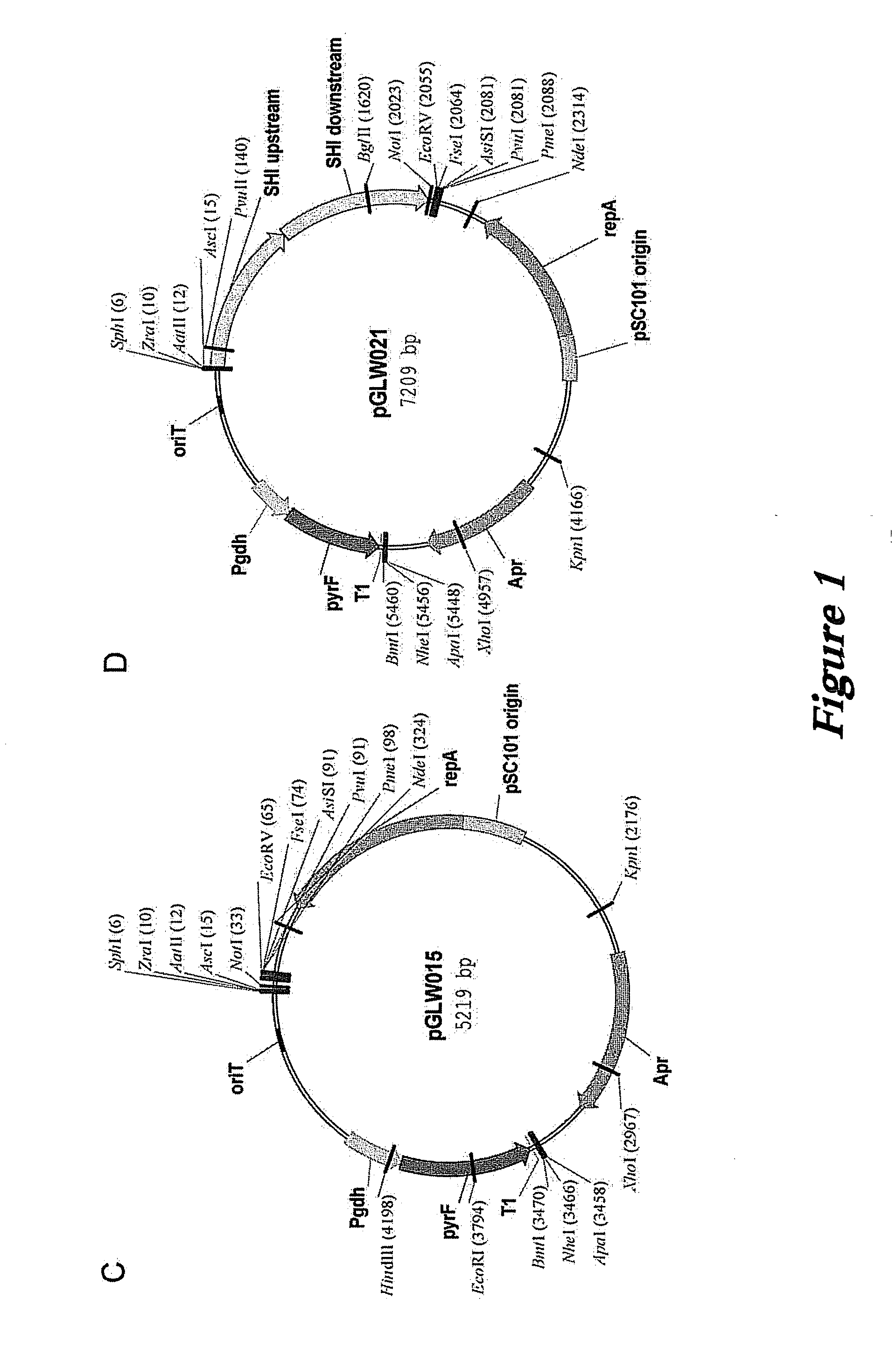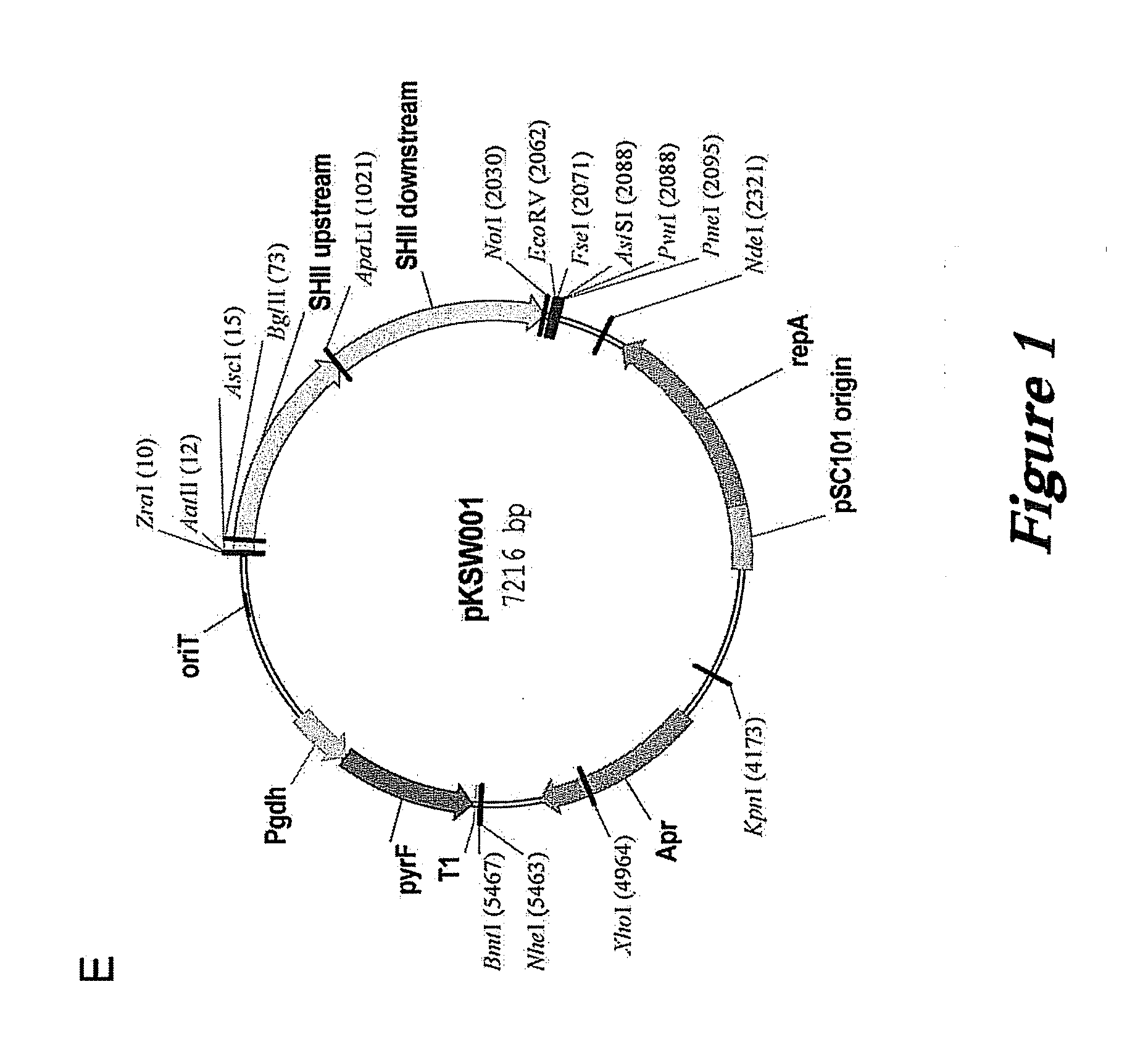Pyrococcus furiosus strains and methods of using same
a technology of pyrococcus furiosus and methods, applied in the field of pyrococcus furiosus strains and methods of using same, can solve the problems of lack of selectable markers, many unique challenges, genetic manipulation,
- Summary
- Abstract
- Description
- Claims
- Application Information
AI Technical Summary
Benefits of technology
Problems solved by technology
Method used
Image
Examples
example i
Natural Competence in the Hyperthermophilic Archaeon Pyrococcus furiosus Facilitates Genetic Manipulation: Construction of Markerless Deletions of Genes Encoding the Two Cytoplasmic Hydrogenases
[0074]In attempts to develop a method of introducing DNA into Pyrococcus furiosus, a variant was discovered within the wild-type population that is naturally and efficiently competent for DNA uptake. A pyrF gene deletion mutant was constructed in the genome, and the combined transformation and recombination frequencies of this strain allowed marker replacement by direct selection using linear DNA. In this example, the use of this strain, designated COM1, is demonstrated for genetic manipulation. Using genetic selections and counterselections based on uracil biosynthesis, single- and double-deletion mutants of the two gene clusters that encode the two cytoplasmic hydrogenases were generated. The COM1 strain will provide the basis for the development of more sophisticated genetic tools allowing...
example ii
A Rapid, High Efficiency Method for Selected Marker Replacement in Hyperthermophiles: use for Construction of a Tryptophan Auxotroph for Nutritional Selection in Pyrococcus furiosus
[0101]We recently reported the isolation of a strain of Pyrococcus furiosus, COM1, that is naturally and efficiently competent for DNA uptake. A deletion of the pyrF gene was constructed in the genome, and the combined transformation and recombination frequencies of this strain allowed marker replacement by direct selection using linear DNA. In testing marker replacement by direct selection using linear DNA it was discovered that marker replacement was possible with as few as 20 nucleotides of flanking homology. This feature was used to design a strategy for selection of constructed deletions using PCR products and subsequent excision, or “pop-out”, of the selected marker. This method allows the construction of a markerless deletion of virtually any gene that is not essential for viability, no matter how...
example iii
Attempts to Construct a Stable Shuttle Vector for P. furiosus
[0121]Plasmids based on the high copy pGT5 plasmid from P. abyssi have been reported (Lucas et al., 2002 Appl. Environ. Microbiol. 68:5528-5536; Waege et al., 2010 Appl. Environ. Microbiol. 76:3308-3313). These plasmids have a significantly reduced copy number in P. furiosus (Waege et al., 2010 Appl. Environ. Microbiol. 76:3308-3313) and cannot be used for selection of transformants in closely related Thermococcus kodakarensis (Santangelo et al., 2008 Appl. Environ. Microbiol. 74:3099-3104). Our own constructs based on pGT5 were very unstable, rapidly lost without selection, and showed major internal deletions.
[0122]The pGT5 plasmid sequence encodes two open reading frames which cover 85% of the plasmid genome (Erauso et al., 1996 J. Bacteriol. 178:3232-3237). The larger of the ORFs encodes a Rep75 protein involved in rolling-circle replication (Erauso et al., 1996 J. Bacteriol. 178:3232-3237; Marsin and Forterre, 1998 Mo...
PUM
| Property | Measurement | Unit |
|---|---|---|
| Fraction | aaaaa | aaaaa |
| Digital information | aaaaa | aaaaa |
| Length | aaaaa | aaaaa |
Abstract
Description
Claims
Application Information
 Login to View More
Login to View More - R&D
- Intellectual Property
- Life Sciences
- Materials
- Tech Scout
- Unparalleled Data Quality
- Higher Quality Content
- 60% Fewer Hallucinations
Browse by: Latest US Patents, China's latest patents, Technical Efficacy Thesaurus, Application Domain, Technology Topic, Popular Technical Reports.
© 2025 PatSnap. All rights reserved.Legal|Privacy policy|Modern Slavery Act Transparency Statement|Sitemap|About US| Contact US: help@patsnap.com



